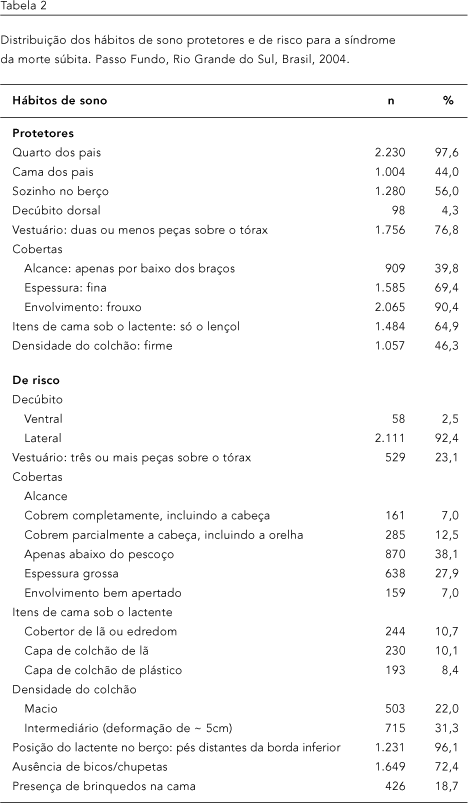This cross-sectional study on sleeping habits with potential risk for sudden infant death syndrome included all live births in Passo Fundo, Rio Grande do Sul, Brazil, in 2003 with data collection from Certificates of Live Birth and interviews, analyzed with descriptive statistics and the qui-squared test. From the 2,634 live births, 2,285 children were selected (86.75%), with 8.4% exclusion and 5.2% losses. Protective habits included 77% of infants with appropriate clothing, 90% loosely wrapped, 69% with thin blankets, 98% sleeping in the parents' bedroom, and 56% in the crib. Potentially risky habits included lateral decubitus (92%), use of a pillow (88%), and feet far from the lower edge of the crib (96%). Among low-income families, bed-sharing with other children was significant (p = 0.00). Thus, in a county with a low prevalence of sudden infant death syndrome, infants are exposed to both protective and risk factors, suggesting that in underprivileged populations in developing countries, other risk factors for this syndrome should be considered.
Infant; Sleep; Sudden Infant Death


